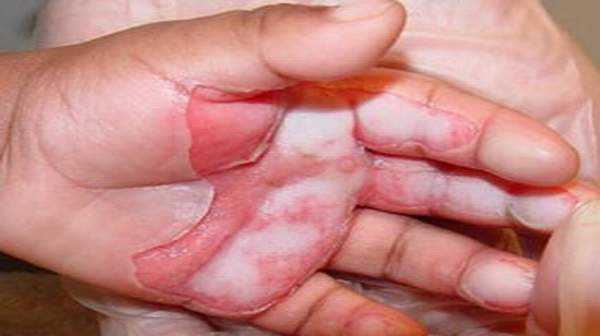What's in this article?
Thermal Burns Overview
From simple sunburn on vacation to touching a hot pot on a stove, many of us have experienced minor burns at one time or another. Thermal burn injuries are very common. Children are particularly at risk due to accidental burns.
The type of burn and the severity of the burn depend on the number of layers of skin affected. Most burns are mild, but some may be severe. Most importantly, a majority of burns are estimated to be preventable.
Caring for a heat-induced or thermal burn:
- Remove the child from the heat source.
- Cool the affected area with cold water or cold compresses until pain is reduced or alleviated.
- If a blister has formed, do not break it.
- Protect the burn with a dry, sterile, gauze bandage or with a clean bed sheet or cloth.
- If your child’s clothing is stuck to the burned area, do not attempt to remove it. Instead, cut around the clothing leaving the burn intact.
- Do not apply any ointments, oils, or sprays to the burned area unless prescribed by your doctor.
- If your child has burns on the hand, foot, face, eyes, or groin, or burns that cover a large area, seek medical attention or dial 911 for emergency medical attention.
Thermal Burns Treatment
For All Burns
1. Stop Burning Immediately
- Put out fire or stop the person’s contact with hot liquid, steam, or other material.
- Help the person “stop, drop, and roll” to smother flames.
- Remove smoldering material from the person.
- Remove hot or burned clothing. If clothing sticks to skin, cut or tear around it.
2. Remove Constrictive Clothing Immediately
- Take off jewelry, belts, and tight clothing. Burns can swell quickly.
Then take the following steps:
For First-Degree Burns (Affecting Top Layer of Skin)
1. Cool Burn
- Hold burned skin under cool (not cold) running water or immerse in cool water until pain subsides.
- Use compresses if running water isn’t available.
2. Protect Burn
- Cover with sterile, non-adhesive bandage or clean cloth.
- Do not apply butter or ointments, which can cause infection.
3. Treat Pain
- Give over-the-counter pain reliever such as ibuprofen.
4. When to See a Doctor
Seek medical help if:
- You see signs of infection, like increased pain, redness, swelling, fever, or oozing.
- The person needs tetanus or booster shot, depending on date of last injection. Tetanus booster should be given every 10 years.
- Redness and pain last more than a few hours.
- Pain worsens.
5. Follow Up
- The doctor will examine the burn and may prescribe antibiotics and pain medication.
For Second-Degree Burns (Affecting Top 2 Layers of Skin)
1. Cool Burn
- Immerse in cool water for 10 or 15 minutes.
- Use compresses if running water isn’t available.
- Don’t apply ice. It can lower body temperature and cause further damage.
- Don’t break blisters or apply butter or ointments, which can cause infection.
2. Protect Burn
- Cover loosely with sterile, nonstick bandage and secure in place with gauze or tape.
3. Prevent Shock
Unless the person has a head, neck, or leg injury, or it would cause discomfort:
- Lay the person flat.
- Elevate feet about 12 inches.
- Elevate burn area above heart level, if possible.
- Cover the person with coat or blanket.
For Third-Degree Burns
1. Call 911
2. Protect Burn Area
- Cover loosely with sterile, nonstick bandage or, for large areas, a sheet or other material that that won’t leave lint in wound.
- Separate burned toes and fingers with dry, sterile dressings.
- Do not soak burn in water or apply ointments or butter, which can cause infection.
3. Prevent Shock
Unless the person has a head, neck, or leg injury or it would cause discomfort:
- Lay the person flat.
- Elevate feet about 12 inches.
- Elevate burn area above heart level, if possible.
- Cover the person with coat or blanket.
- For an airway burn, do not place pillow under the person’s head when the person is lying down. This can close the airway.
- Have a person with a facial burn sit up.
- Check pulse and breathing to monitor for shock until emergency help arrives.






